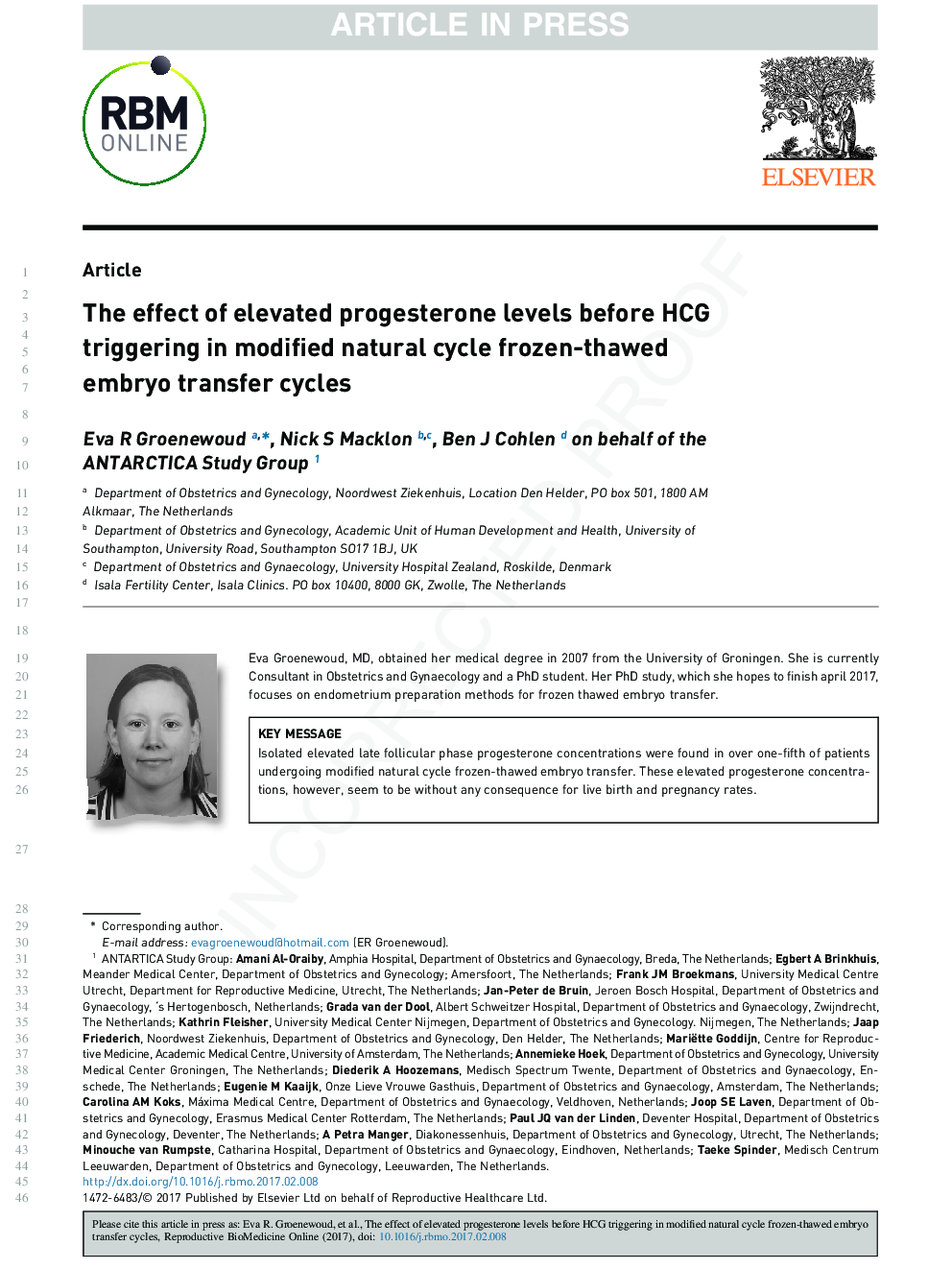| Article ID | Journal | Published Year | Pages | File Type |
|---|---|---|---|---|
| 5696611 | Reproductive BioMedicine Online | 2017 | 9 Pages |
Abstract
Recent studies suggest that elevated late follicular phase progesterone concentrations after ovarian stimulation for IVF may result in embryo-endometrial asynchrony, reducing the chance of successful implantation after fresh embryo transfer. It remains unclear to what extent elevated late follicular phase progesterone levels may occur in unstimulated cycles before frozen-thawed embryo transfer, or what affect they may have on outcomes. In this cohort study, 271 patients randomized to the modified natural cycle arm of a randomized controlled trial comparing two endometrial preparation regimens underwent late follicular phase progesterone and LH testing. A receiver operating characteristic curve was constructed to identify a progesterone cut-off level with the best predictive value for live birth (progesterone level â¥4.6ânmol/l). A total of 24.4% of patients revealed an isolated elevated serum progesterone of 4.6ânmol/l or greater, and 44.3% showed an elevated progesterone level in association with a rise in LH. Neither endocrine disruption affected outcomes, with live birth rates of 12.9% versus 10.6% (OR 0.6, 95% CI 0.19 to 1.9) and 11.9% versus 17.5% (OR 1.6, 95% CI 0.79 to 3.1), respectively. Whether monitoring of progesterone and LH in natural cycle frozen-thawed embryo transfer has added clinical value should studied further.
Related Topics
Health Sciences
Medicine and Dentistry
Obstetrics, Gynecology and Women's Health
Authors
Eva R. Groenewoud, Nick S. Macklon, Ben J. Cohlen,
